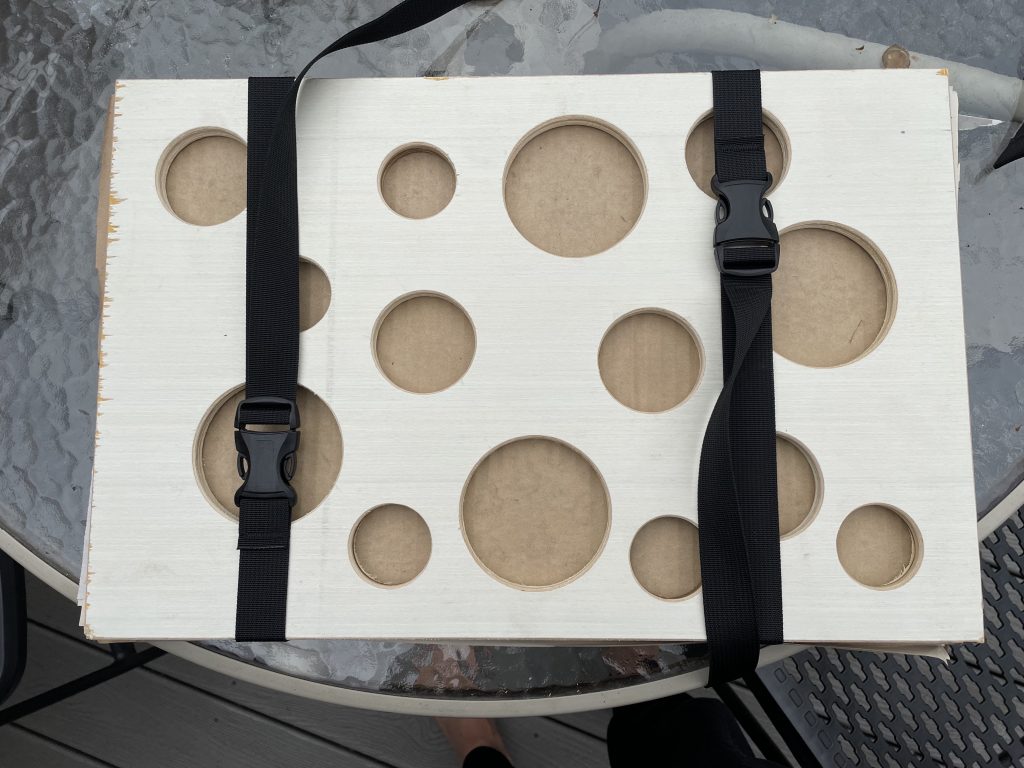
The Press: I didn’t have a press. My husband cut these two 12” x 18” boards for the press. For aeration I thought it would be fun to try this polka-dot look and he obliged. The 60″ belts are from REI.
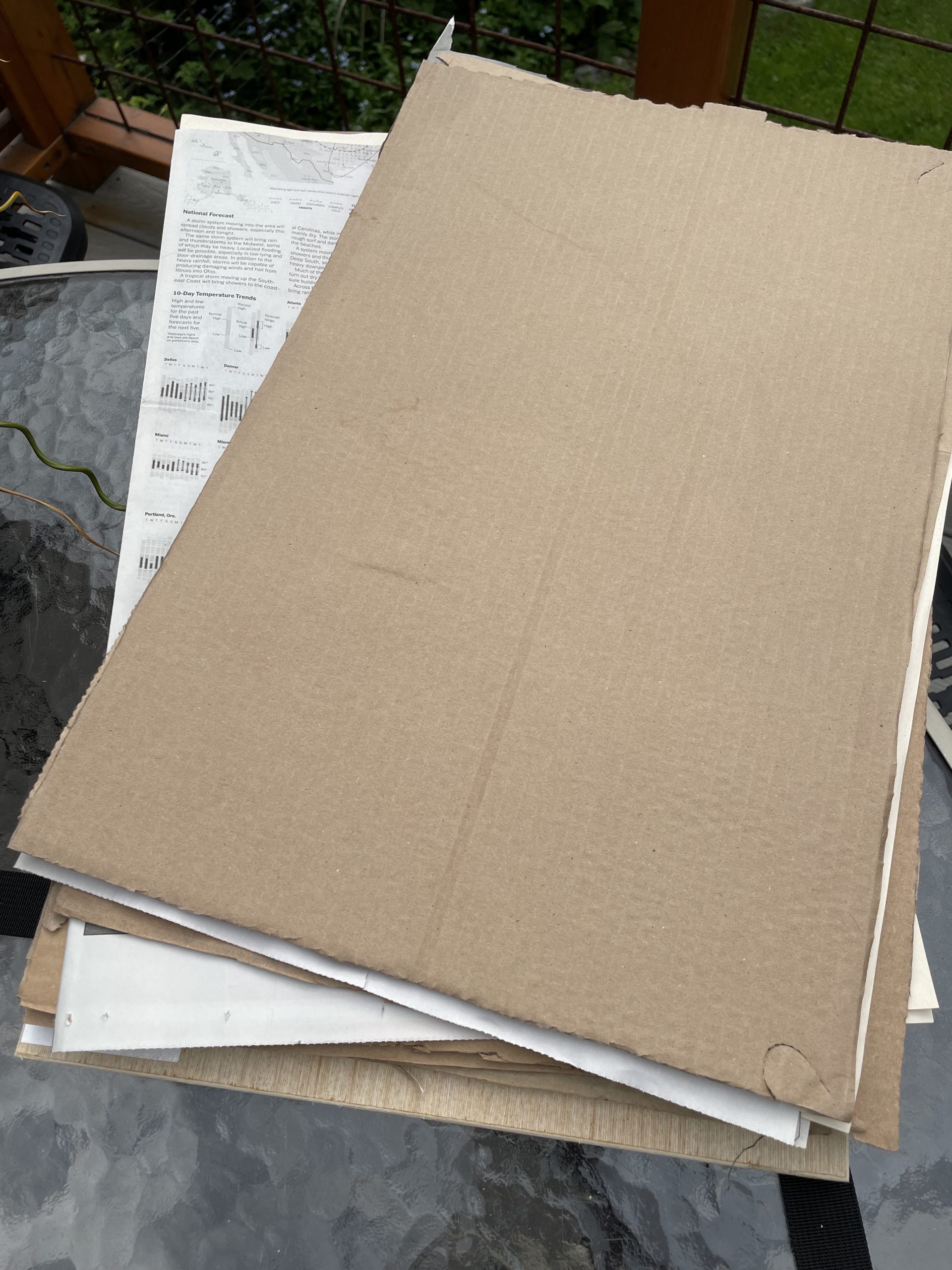
I cut up paper bags for the blotters, cardboard for ventilators and used newspaper to separate the plants. For now, it’s working pretty well.
As for my plant specimens selections, I guess I was trying to limit myself to the yard. These are not very glamorous plant choices. I live on a fully altered and cultivated suburban sized lot in the middle of Anchorage and I was unclear if I should pull cultivated plants or seek out true native Alaska Flora specimens in the field. In the end, I chose to pull these plants from my gardens as I would anyway because they are apt to dominate if left to go to seed. I am looking forward to collecting field specimens in the future.
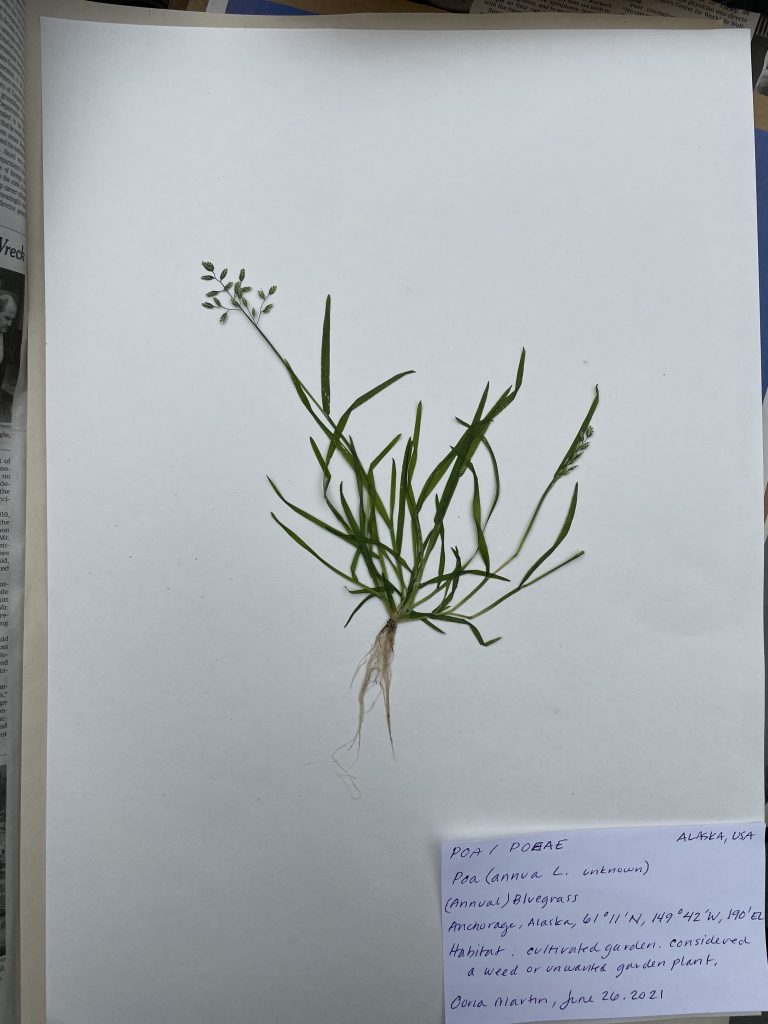
1. Poa annua? Annual Bluegrass? I’ve always wondered what type this is as it shows up often in the gardens. I’m pretty sure it is a type of Bluegrass that moves in from the lawn and although I have a great field guide to Alaska Grasses from the the Alaska Plant Materials Center in Palmer, it was too challenging for me to try and speed learn all the special Grass terminology. I think it is a sweet little grass and I don’t mind it, but it was growing in with the lettuce so it was an easy target for the press.

Fibrous Roots 
Spikelets showing anthers 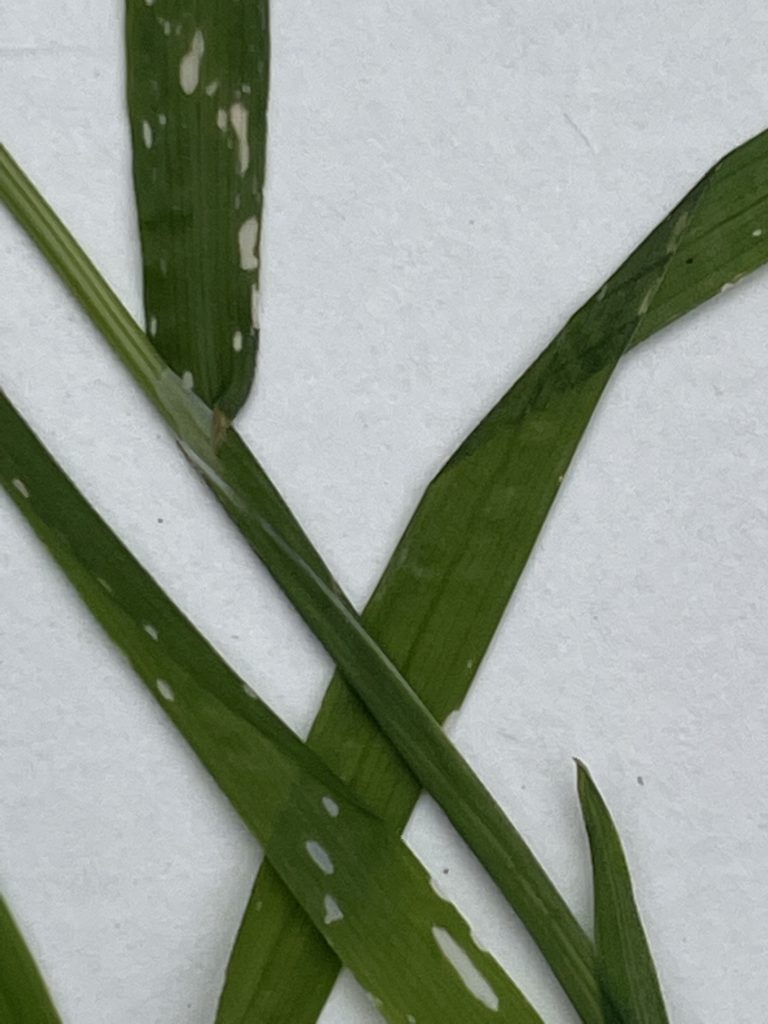
Sheathing showing membranous ligules?
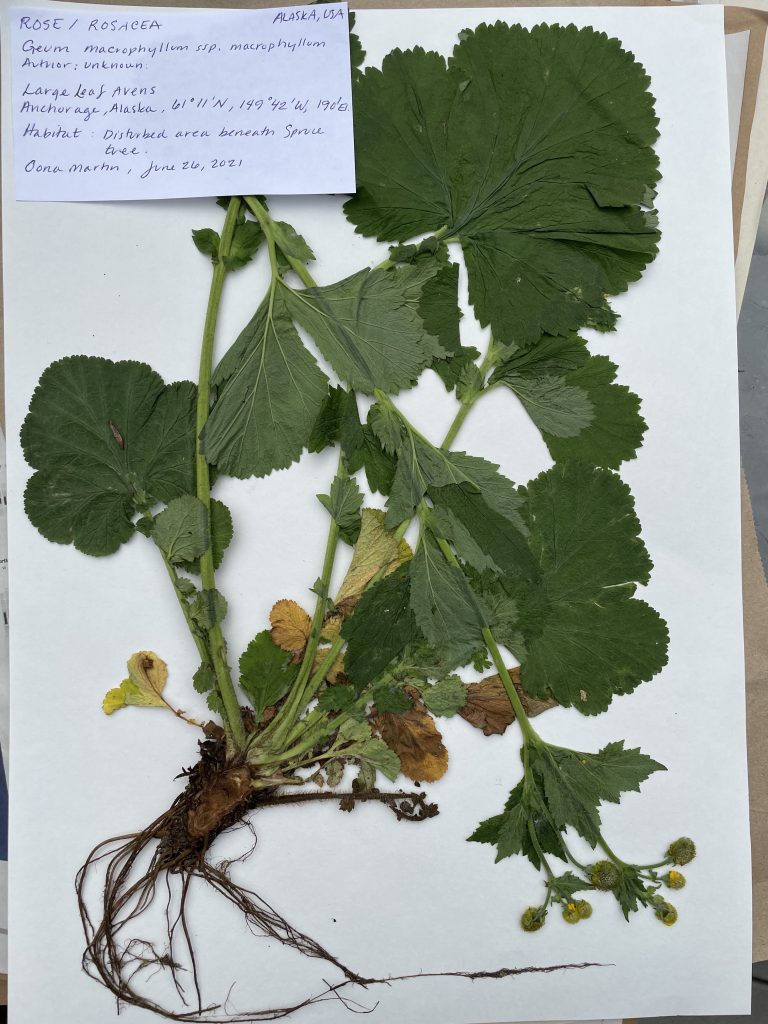
2. Geum macrophyllum ssp. macrophyllum Willd.*, Large Leaf Avens: While it has a cheery, yellow flower, the seed heads stick to everything from my dogs fur to my socks. The root stock (caudex!) is woody and perennial. I sliced it to make it fit in the press. I was also pleased to be able to see the little anthers on the seed head using my camera-phone even though the petals are spent.
*I opened the Hultén and found the author: Willd. I also found other possibilities that I didn’t consider so please correct me if needed.
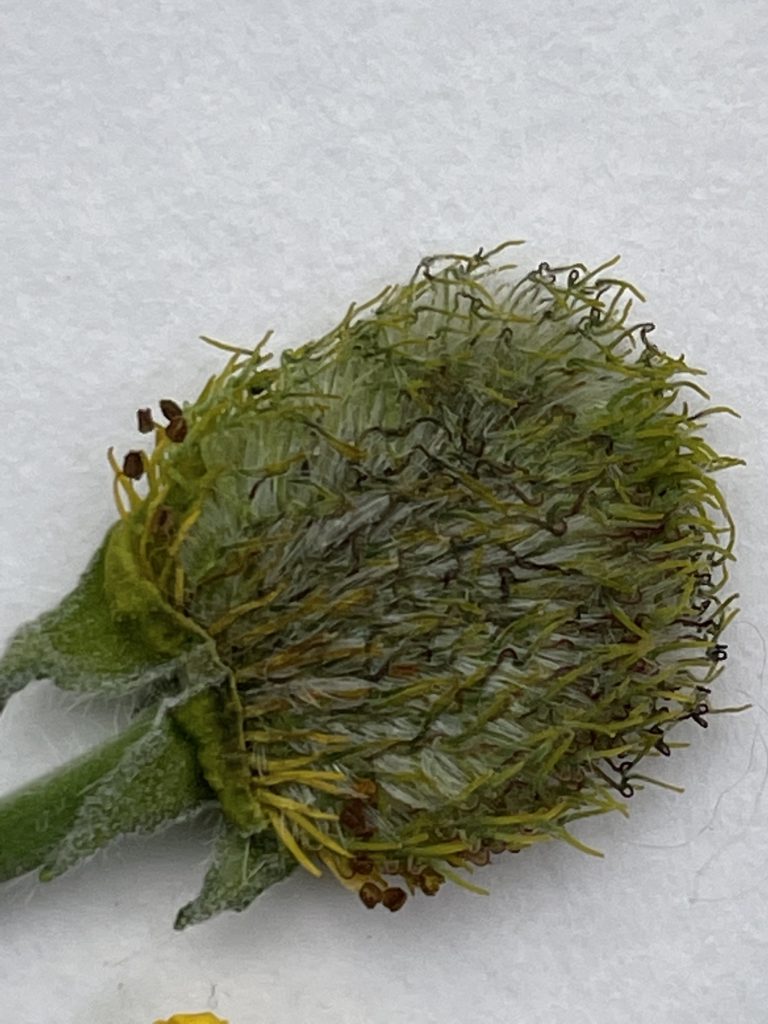
Are these all styles? or are some sterile stamens? 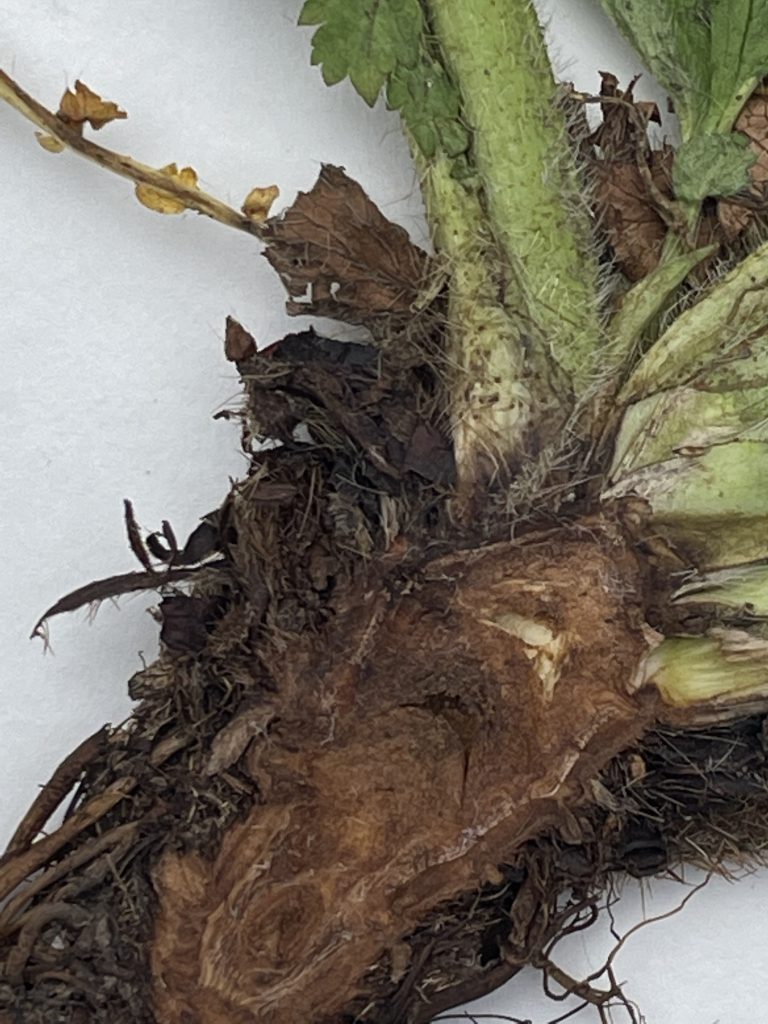
woody caudex! 
ternately? lobed serrated leaf
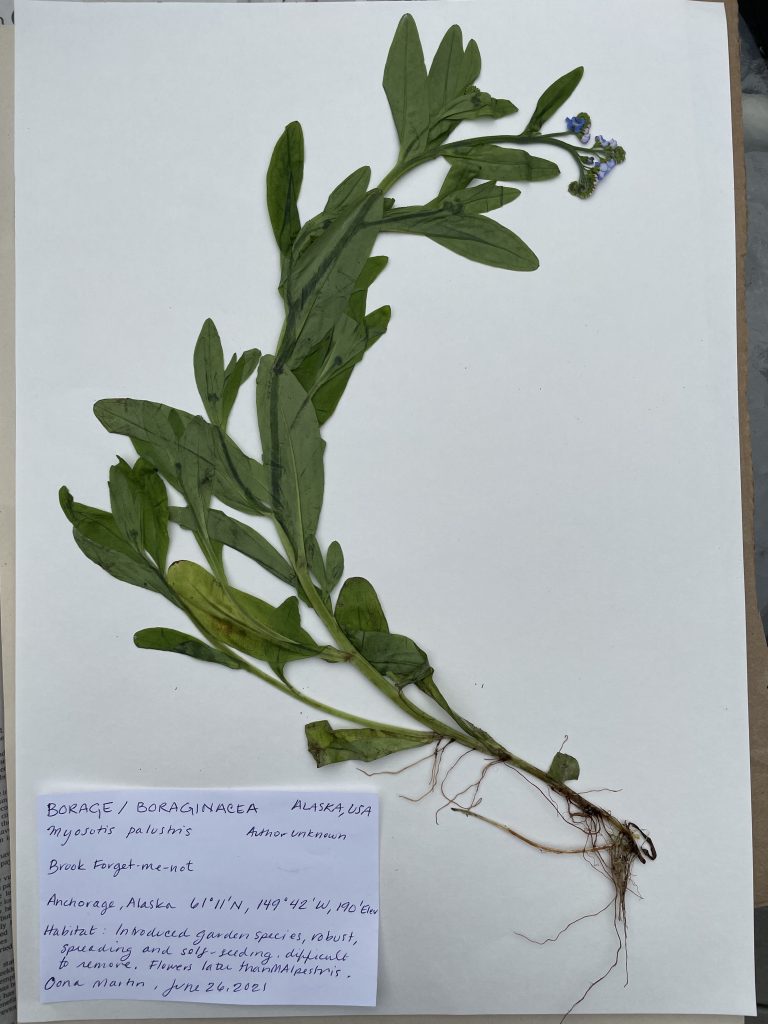
3. Myosotis palustris L.*, Brook Forget-me-not: Considered a bit of a pest since it is an introduced species and is robust, spreading by seed and roots. While it looks very similar to our Native Forget-me-not, M. alpestris, it blooms later in the season. I used to remove it but now I leave it in places, since if feels endless and it is pretty. It came with the house.
I have to say that this was a disappointing specimen. I didn’t achieve a flat open flower. Most likely because I overfilled the press with that giant Geum.

sessile or sheathing-like attachment? 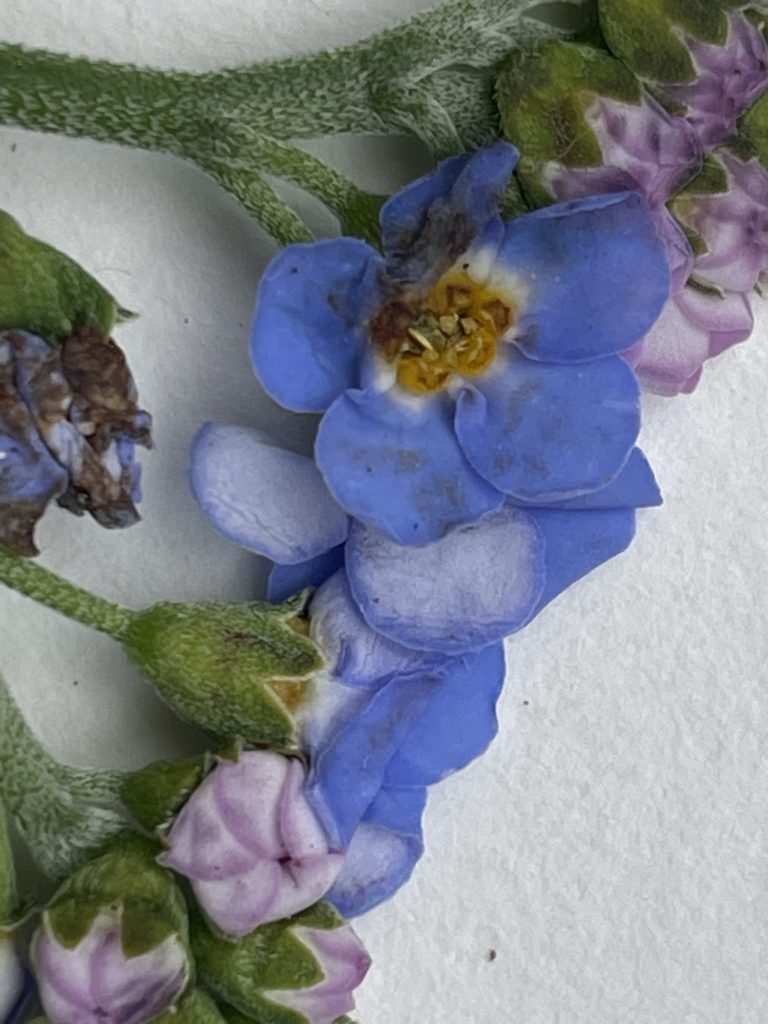
Perigenous hypanthium? 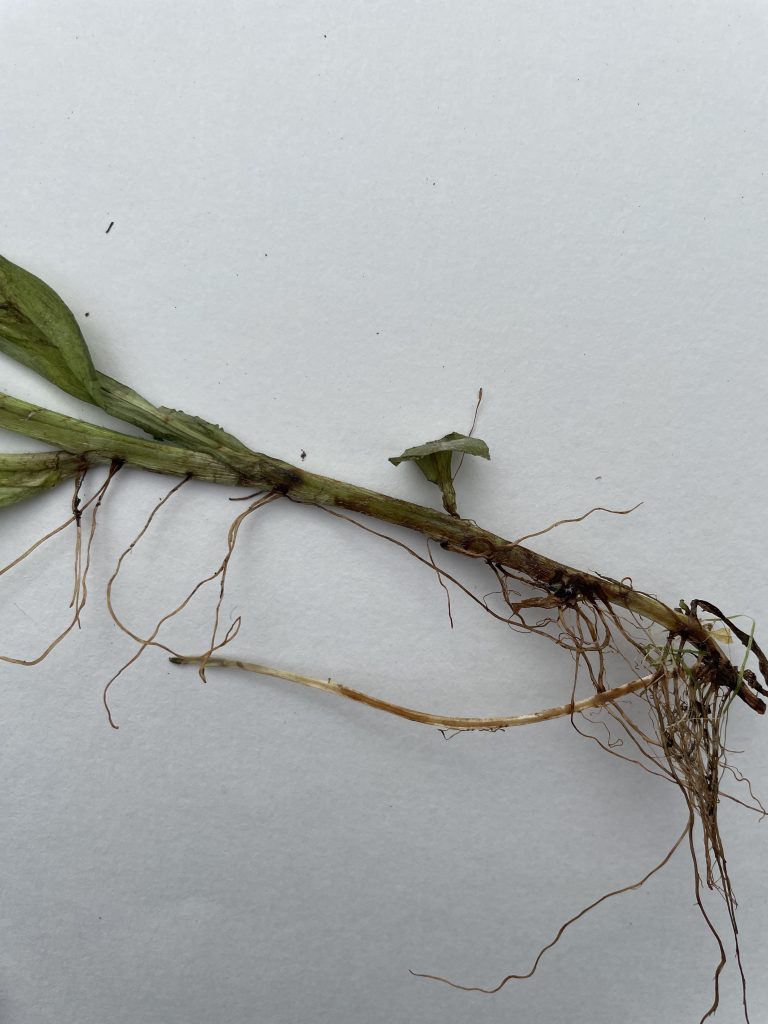
Both rhizome and advantageous roots?


Congrats Oona,
this is a beautiful press and you got great results pressing your “yard” selection. Very nice! I love your documentation of the different features of the plants including using botanical terminology. For the Geum inflorescence/ infructescence – yes, these are all styles, if you were to dissect the infructescence it is similar to a strawberry with lots of individual ovaries inserted on a receptacle and the stamens are inserted on the hypanthium. Ternately-lobed or -cleft is a good term to describe the leaves. For the Myosotis if you wish to get nicely flattened flowers, sometimes it is useful to readjust the flowers a few hours after you put them in the press. We also use foam sometimes for really thick plants to balance the press, or double up on the cardboard. Awesome pictures of the grass as well. I think you are right it is Poa annua, some of your spikelets show the first glume as a smaller, claw-like glume, about 1/2 the size of the second glume (see attached from another website). Very well done. Thanks for going the extra mile with this assignment!